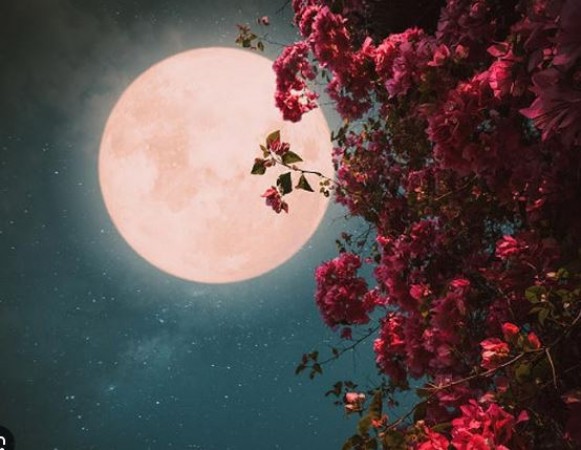
Full Moon (Purnima) and New Moon (Amavasya) are celestial events that have captivated human imagination for centuries. These lunar phases have both astronomical and astrological significance, often associated with various beliefs and observations. In this article, we will explore the dual significance of Full Moon and New Moon, examining their impact on both the cosmos and human life.
Astronomical Perspective
Lunar Phases:
Full Moon and New Moon are two significant phases in the lunar cycle. A Full Moon occurs when the moon is positioned directly opposite the sun, while a New Moon occurs when the moon is positioned between the Earth and the sun.
Gravitational Effects:
The gravitational pull of the moon affects the Earth's oceans, leading to the rise and fall of tides. This phenomenon is most pronounced during Full Moons and New Moons, when the sun, moon, and Earth align. The gravitational interaction between these celestial bodies results in higher high tides and lower low tides, known as spring tides.
Natural Disasters:
Some studies suggest a correlation between lunar phases and natural disasters, such as earthquakes and volcanic eruptions. While the evidence is inconclusive, it is theorized that the gravitational forces exerted during Full Moons and New Moons may contribute to the triggering of these geological events.
Lunar Influence on Earth's Water:
The moon's gravitational pull also affects the water content in the Earth's atmosphere, potentially influencing weather patterns. Some argue that Full Moons and New Moons can be associated with extreme weather conditions.
Astrological Perspective
Moon's Influence on Human Emotions:
In astrology, the moon is considered a significant celestial body with a profound influence on human emotions and behavior. It is associated with our innermost feelings, instincts, and subconscious mind.
Full Moon and Emotions:
Full Moons are often believed to intensify emotions and can bring buried feelings to the surface. Some people report experiencing heightened sensitivity, restlessness, or even mood swings during this phase.
New Moon and New Beginnings:
New Moons, on the other hand, are seen as a time for new beginnings and setting intentions. It is believed that the energy of the New Moon can help individuals start fresh and embark on new projects or goals.
Astrological Charts:
Astrologers incorporate the moon's position in an individual's birth chart to gain insights into their emotional nature and how they may respond to lunar phases. The moon's placement in specific zodiac signs can further refine these interpretations.
Purnima and Amavasya in Vedic Astrology:
In Vedic astrology, Full Moon (Purnima) and New Moon (Amavasya) hold special significance. These lunar phases are believed to influence not only emotions but also various aspects of life, including health and relationships.
Rituals and Remedies:
Many people engage in rituals and remedies during Full Moons and New Moons to harness the lunar energy and mitigate potential challenges. These rituals often involve prayers, meditation, fasting, and acts of charity.
Impact on Natural Disasters:
Some astrologers suggest that the moon's position during Full Moons and New Moons can contribute to adverse events, including natural disasters and accidents. While this belief lacks scientific validation, it remains a part of astrological tradition.
Full Moon (Purnima) and New Moon (Amavasya) are celestial phenomena that have captured the human imagination for millennia. From an astronomical perspective, they influence Earth's tides and are sometimes associated with natural disasters. In astrology, these lunar phases hold a profound impact on human emotions and behavior, with Full Moons intensifying feelings and New Moons marking opportunities for new beginnings. In Vedic astrology, Purnima and Amavasya are considered especially significant, influencing various aspects of life.
While scientific evidence for some of these beliefs is limited, the cultural and spiritual significance of Full Moon and New Moon remains deeply rooted in various traditions and practices worldwide. Whether as a time for introspection, rituals, or simply enjoying the beauty of the night sky, these lunar phases continue to hold a special place in human culture and spirituality.
Don't make a fool of yourself! Understand the traditions of the nations you visit
At what time does worship not yield results? On the contrary, we become partners of the sinner